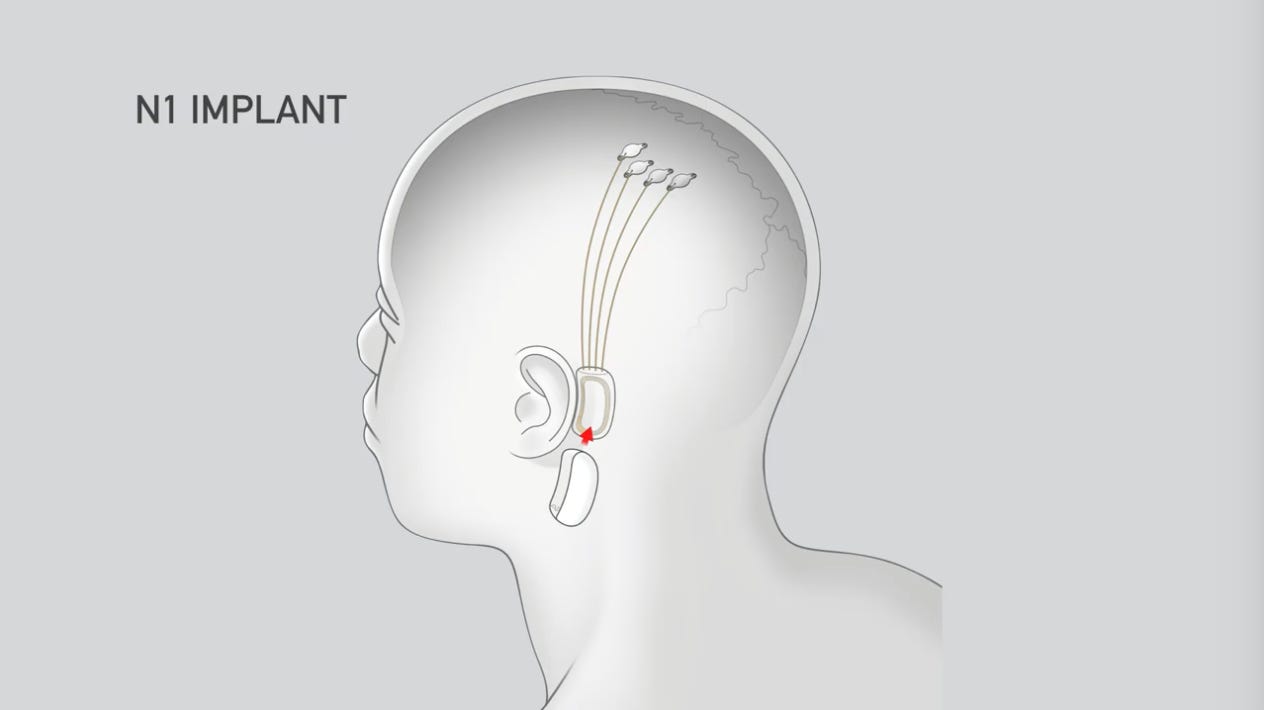TL;DR: Neuralink Is Out Of Stealth Mode
Yesterday, Elon Musk’s secretive brain-computer interface (BCI) company Neuralink presented the results of their work over the past two years.
The presentation revealed a device that sits behind your ear and will allow you to control your phone with your thoughts. Use of the device requires undergoing a medical procedure where an automated robot implants thousands of electrodes into your brain. The first product is called the N-1 Sensor and will be controlled via an iPhone app. In-human clinical studies are forecasted to start in 2020.

Why Neuralink?
Treat existing brain disorders and hard to treat conditions
Preserve your brain for late-stage diseases like Alzheimers and Parkinsons
Create a well-aligned future to improve communication and information transfer
FAQ
Q: Can I buy this?
A: Not yet. The team is beginning with clinical trials for patients who became quadriplegics after a spinal cord injury.
Q: Why does the device need to be installed in my brain and not function as a wearable?
A: There is a hard physical limit on how far away a sensor can be before it comes impossible to record the action potential (signals) from neurons. The distance is about .006 millimeters.
Q: Where did this come from? What similar technologies exist today?
A: Current BCI devices include the Utah Array, which requires a large external sensor; and the Deep Brain Stimulator, which is inserted into the brains of patients with Parkinson’s to deliver electric stimulation.
Q: What are some things the device can do?
A: Initially, the device will be intended to control phones, mouses, and keyboards to improve the lives of quadriplegics. Over time, the signals from the device will be able to recognize many types of cognitive function, including: movement, vision, spatial maps, speech, mood, pain, hunger, thirst, memory, mathematical reasoning, etc.
Q: Will there be an “app store” for this device?
A: It’s still too early to tell, but likely that developers will be able to create solutions that use data from the device. The only rule is that they can’t be supported by an advertising business model.
Q: What is the business model for the device?
A: The cost of brain injuries is extremely high to society. Comprehensive medical care, hospices, and caregivers are economic burdens that can be removed by allowing formerly paralyzed patients to be productive.
Q: Is this tested on animals?
A: Yes, in order to ensure safety for human patients, animal testing is an important step in the scientific process. However, the team is conscientious of ethical considerations and intentionally design experiments to be thoughtful about how they reduce, reuse, and refine materials. Also, Elon confirmed that they have implanted the chip in a monkey and it has learned to control a computer with its mind.
Further Details
Currently, our brains are composed of a limbic system (lizard brain) and cortex (big, smart caveman brain) that work together. Elon is betting that Neuralink can introduce a tertiary layer in a digital format that will complement our existing biology.
The presentation primarily served as a recruiting event, as well as a deep dive into the scientific aspects of the product. Some key players from Neuralink worth following:
Max Hodak - President
Dr. Matt McDougall - Neuroscientist
Vanessa Tolosa - Neural Interfaces
DJ Seo - Implant Systems
Philip Sabes - Scientist
Recommended reading:
Neuralink and the Brain’s Magical Future - Wait But Why
An Integrated Brain-Machine Interface Platform With Thousands Of Channels - Musk & Neuralink
Learning to Control a Brain–Machine Interface for Reaching and Grasping by Primates
A Mathematical Theory of Communication
Some photos:







